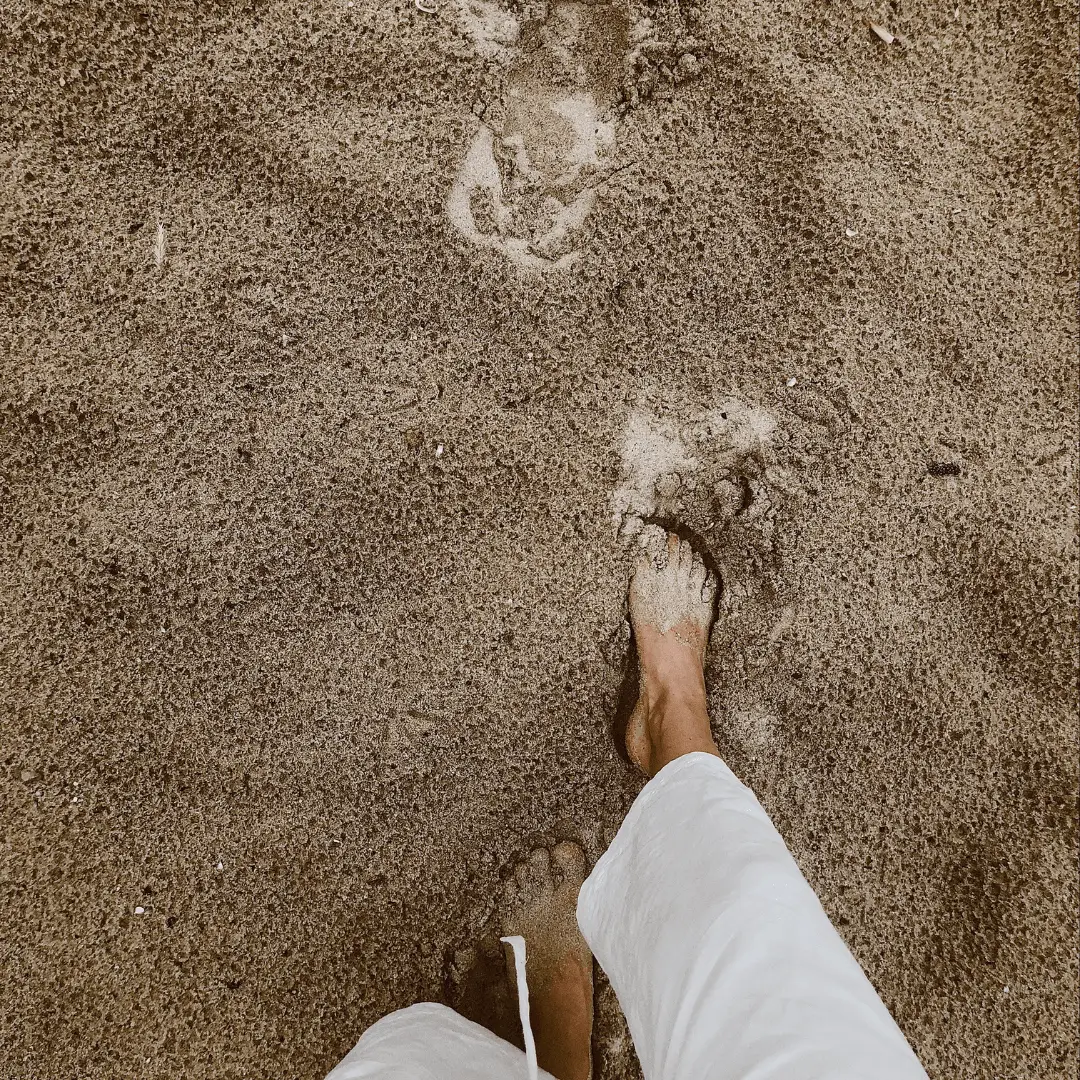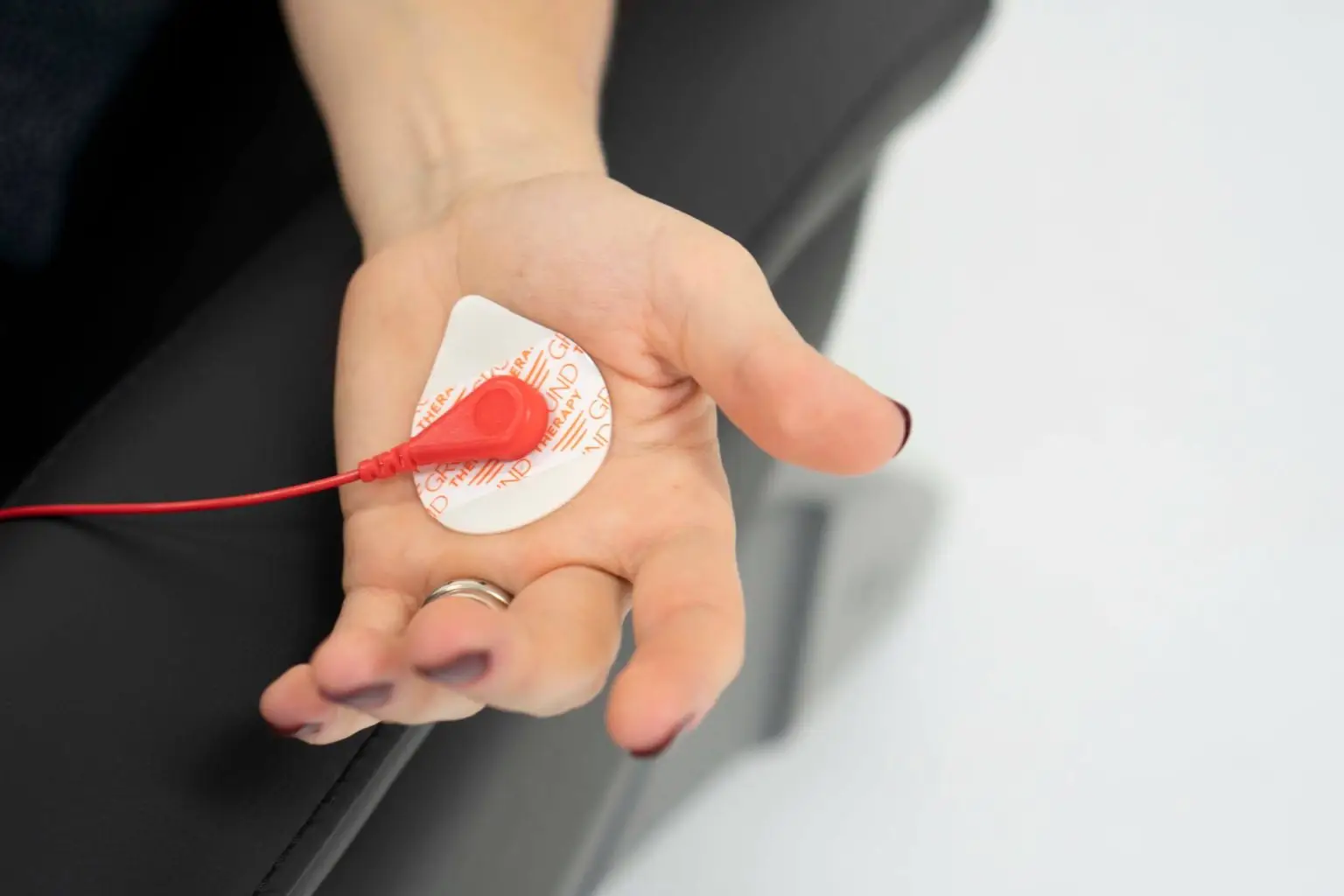
By visiting our site, you agree to our privacy policy regarding cookies, tracking statistics, etc.
When you purchase through links on our site, we may earn an affiliate commission. Here’s how it works.
Say goodbye to an unhealthy behavior of managing stress from your day-to-day responsibilities along with life’s challenges, and rewire your mind with grounding exercises. Maintain holistic well-being by knowing when to take a pause from increased stress and heightened emotions, which has become a necessity to alleviate inconvenient psychological impacts, may it be from career demands, family obligations, or financial pressures.
Grounding Activities have been widely recognized as tools to enhance well-being, encompassing mental, emotional, and physical aspects. This early practice throughout the passing of traditions has gained prominence in psychological studies as an effective method to reestablish a connection with oneself. Originating from different timeframes and cultural backgrounds, grounding methods have shown effectiveness across various age groups and identities.
At its essence grounding revolves around fostering a connection with nature on both physical levels. Every grounding exercise draws inspiration from the natural environment, prompting individuals to nurture feelings of rootedness, peace, and equilibrium amidst any adversity. Whether through breathing, visualization exercises, or engaging in active movements, grounding facilitates individuals to anchor themselves in the present moment and release any barriers hindering their sense of stability and well-being.

The term “grounding” may not immediately bring thoughts of health and wellness as it is often associated with farming or gardening systems. However, the concept of grounding spans a range of applications in the facets of well-being and significantly impacts those who practice for mind body connection.
Grounding comprises a wide array of practices, each tailored to meet the needs and preferences of individuals. Examples include walking on grass, practicing yoga, or engaging in meditation. Regardless of age, fitness level, or spiritual beliefs, grounding activities can be personally fulfilling.


The practice of grounding has roots that extend back to ancient traditions and indigenous cultures where it held great importance for its healing properties and spiritual significance. In schools of thought such as Ayurveda and Traditional Chinese Medicine, grounding is closely connected to maintaining a balance between energies within the body and those currently in the external environment. Various indigenous spiritual teachings from global regions emphasize the Earth’s role as a source of life, wisdom, and tranquility.
Reaching the interest of the scholars, scientific research has been conducted and has continuously produced a sufficient amount of empirical evidence about the effectiveness of grounding for promoting health. Most findings indicate grounding can decrease inflammation, promote the quality of sleep, remove stress-related hormones, and emotional resilience.
However, as the world moves along with the development of technology and urbanization, people tend to disconnect from nature, decreasing the opportunity to embrace a new sense of healing and relief.


Grounding techniques connect the body to the Earth’s electric energy, which makes the electrons move from the Earth to the body. The concept behind the world is that free radicals are neutralized; inflammation is reduced; and balance is restored in the body. Scientifically, grounding modifies the autonomous system of the body, which is presumed to dominate the relaxed body system and therefore promotes poise and decreases stress.
Also, studies assert that grounding is beneficial in improving sleep quality, reduction of pain, and enhancement of the immune system. Being negatively charged as electrons, this may prove to be an oxidative reaction, which in turn may help in countering oxidative stress or the process of balancing free radicals and the body’s antioxidant, which reduces the secretion of stress hormones, such as cortisol.
On top of this, grounding is linked to the brainwaves, making the mind peaceful and giving one a sharp and distinctive mind. These mechanisms make the idea of grounding the one that can rewire the mind by reducing stress and increasing overall well-being.

Placing your mind into the actions of grounding, also known as earthing, offers various benefits for physical and mental well-being:




Ready yourself to rewire your mind and embark on a relieving journey with the following top grounding techniques:
Somatic therapy exercises require reconnection of the body’s current state, enhancing focus on breathing along with the role of gently scanning the body for strain or any discomfort of muscles. Somatic Experiencing is having your breath and awareness transfer its connection to the Earth giving a new level of comfort.
To practice grounding, sit on a peaceful flat surface, close your eyes, and engage with the earth through deep breaths. Imagine the repressed emotion being embraced and dissolving from the body, or picture how your strains are being released little by little.

A technique that is Identified as a form of one’s attention to the bodily sensations through immersing oneself in the surroundings. The activity starts by naming the following:
5, engage your senses by looking for five things you can see, noting their colors, shapes, and textures.
4, things you can touch, whether it be the surface beneath you, the texture of your clothes, or objects in your environment.
3, sounds you hear, from the hum of a refrigerator or fan to birds chirping outside.
2, catching two distinct smells, from food or drink to outdoor smells.
1, savor one small wafer or sip of water. Grounding can keep your attention firmly focused on your immediate environment, ensuring that you stay in the current moment.
The quickest grounding exercise is Deep Breathing, calming down the nervous system in only a few seconds of practice. This therapeutic approach cultivates focus on the present moment, cutting off future time perspective that triggers anxiety. By being mindful of the rhythm of breathing without critical judgment from the external and internal environment, attention from any distractions is lessened. This will lead to deep focus and connection to the state of self. Practicing the activity is a powerful tool throughout the day. To begin with, find a place you are comfortable enough to relax, sit, or lie down and close your eyes. Then breathe in slowly and deeply through your nose as it expands your diaphragm, and feel the physical sensation as you do so. Hold your breath for a second before letting it out slowly and completely through your mouth and feeling your belly go down. Continue to breathe while maintaining this focus and you’ll notice that different ideas and feelings arise in your mind and body.
Barefoot walking is not just only one of the simplest and most accessible exercises you can do. The technique conceptualizes the action of walking while feeling the abundance of nature, including barefoot on grass, sand, or soil. Grounding exercise, which is also known as Earthing, is an activity that absorbs the Earth’s natural richness of electrons from its surface felt by the soles of a person’s feet, which contain a significant number of sensory nerve endings.
Grounding can be achieved by water over your hands or walking on various natural surfaces, including grass, sand, and a forest trail, but barefoot. As individuals walk in direct contact with Earth through their feet, they can feel warm or cool, soft or rough, or smooth or hard contact. Such sensory feedback contributes to mindfulness and grounding as it provides a direct and conscious experience of one’s environment. Barefoot walking offers sedentary or urban individuals a chance to rediscover a great sense of connectivity with nature and benefit from the energy offered by the environment while performing a simple and pleasant activity.


Visualizations:
Visualizations are a grounding technique based on mental imagery that helps connect with the Earth’s energy and strengthen feelings of stability, safety, and inner peace. Utilizing creative mental images engages and activates a part of the brain that functions independently of logical thinking, bypassing conscious resistance to reach the deeper levels of the subconscious to access healing and transforamtion. Multiple visualization techniques may be used or adapted to personal ease and specific intentions, starting from simple images to more complex visualization practices and imaginary travels.
A visualization exercise involves envisioning oneself as a tree with its roots growing deeply into the Earth and branches reaching the sky, anchoring oneself deeply. Then imagine drawing nourishment from the Earth’s energy, gathering strength and vitality as the Earth supports one with all the nutrients needed. This visualization helps individuals gather strength and vitality from the Earth’s energy, feeling the strength in their legs, feet, and roots. This technique is often used to support and nourish the individual.
Another common technique is creating an energy shield – imagine a protective bubble of light gathering around you, forming a sanctuary. Visualize the shield growing for you, As you see this bubble creating the safe space where you ground yourself, feel the warmth of your warm light, as well as the protection from the exterior distractions and disturbances.
Visualizations can be practiced anywhere and require nothing more than one’s thoughts and willingness. They may be incorporated into meditation, relaxation, and other regular practices to deepen and enhance the feeling of being grounded and present.
Nature Immersion:
Nature immersion is a grounding activity that entails spending time in the natural world, such as the woods, mountains, rivers, or sea. Whether walking through wooded paths, swimming in chilly mountain streams, or basking in the sun on a sandy beach, immersing oneself in nature has a number of advantages for the body, psyche, and spirit.
The sights, sounds, odors, and sensations of the natural world act to restore the senses, quiet the brain, and tame the soul, providing a much-needed escape from contemporary life’s daily stresses and diversions. Nature immersion actually enables someone to re-energize with the Earth’s vitality and exploit its recuperative powers in a significant and actual way.
The perspective of green lushness, tall trees, and stretches of water can draw out feelings of heaviness. The sounds of birds chirping, tree leaves rustling, and water down can create a serene atmosphere, activating sensory cells.
It can be done individually or as part of a group and it provides a tremendous opportunity to get the body feels grounded, re-energized, and reconnect with oneself or with others!

Outdoor activities:
One of the most natural and remarkable methods to floor the body and mind, as well as the soul, in the energy of the world and the cycles of life, is outdoor adventure. Walking in the woods, working in a garden, or eating cantering in the grass all offer tree-hugger alternatives to the usual day. Engaging in the sounds, sights, smells, and spirit of the ecosphere can animate the senses, silence the mind, and relieve the soul – innumerable breaks away from the strain and aggravation of recent living.
Additionally, out-of-doors proposes another major payoff for self, stated as earthing. Being in direct contact with the earth’s surface – for example, being barefoot on northern grass, insipid, or stony ground, or swimming in natural water, or anything else—lets your body absorb power from the earth, allowing you to feel relaxed.
Outdoor activities provide numerous opportunities to explore, connect, and find excitement. In addition, they serve as essential reminders of our path with the rest of the earth, which we must maintain and cherish for health, happiness, and vigor.
These exercises provide many versatile and accessible ways to reconnect with the Earth’s natural energy and promote general well-being. By incorporating one or more of these grounding techniques into their daily lives and routines, people of all backgrounds and walks of life can heal nature and begin a path toward general health, happiness, and harmony.
Grounding yoga and tai chi:
Yoga and tai chi are ancient holistic practices involving movement, breathwork, and mindfulness to promote physical, mental, and emotional balance. Both yoga and tai chi focus on grounding techniques, with their roots in rooting through the feet, connecting with the breath, and body awareness of maintaining a balanced connection to gravity. Yoga and tai chi are both flowing disciplines and still, with breath awareness provide the perfect environment to ground, center, and rejuvenate.
Most yogic grounds began through the practice of asanas. In other words, the physical postures are meant to practice stability, strength, and balance. They work on lifting through the spine and engaging the core. For example, Tadasana, or mountain pose, is a posture that requires rooting through the feet and engaging the core while lifting the crown of the head. Balasana or child’s pose is a resting posture that requires rooting through the toes. Additionally, breathwork, specifically Ujjayi Pranayama, or victorious breath, and Dirga Pranayama, a three-part breath, are yogic breathing techniques with an emphasis on relaxation, calming the mind, and the nervous system.
On the contrary, tai chi for grounding is a martial art practiced with slow, aligned, focused breathing and attention to the root in a rising, focused wake-up. By sinking the energy into the earth when it is developed as a stabilizing focus point for the body and mind, the root is a fundamental principle of tai chi It is also a straightening of the alignment into reality and its energy with the intention to ground and rise up. This is the ultimate cooperation between the tai chi form and its philosophy of yin and yang, rising up with the spirit and sinking with reality.
Both yoga, practiced in the form of asanas, and tai chi practices form movement and calmness. The bridge connection to the real world aids in stress relief, calmness enhancement, flexibility in the body, and increased groundedness.
Grounding Mats:
Grounding mats are modern tools that are designed to help people practice earthing from the comfort of their homes, especially when it is impractical to do so directly on the Earth’s surface. They are fitted with conductive surfaces that enable individuals to remain connected to the Earth’s electromagnetic field to ensure that they continue to get the full benefits of earthing. Most grounding mats come with a conductive surface that is connected to a grounding wire. The wire is then plugged into a grounded electric socket or attached to a grounding rod inserted into the ground.
Grounding mats and sheets are mainly used during sleep, work, or relaxation to help people relax, reduce inflammation, and encourage general well-being. When people sleep with grounding mats, they help them restore their circadian rhythms, improve the quality of their sleep, and reduce the level of wakefulness at night. The use of a grounding mat is as straightforward as placing it on the bed, floor, or a piece of furniture and ensuring it is well attached to a grounding socket or rod. They are an effective and less-hassling way to practice earthing throughout the year, irrespective of one’s location.
Most grounding mats come with extra features such as timers, adjustable settings, or built-in EMF protection coating for additional safety and user experience. Check some readily available grounding mats in the market.

Earthing tools are special-purpose devices used to facilitate earthing procedures indoors, where direct contact with the Earth’s surface is not always possible. These products are made of conductive materials that help users maintain their contact with the Earth’s electromagnetic field and reap the benefits of earthing even when indoors.
Earthing tools are available in several different forms, such as grounding sheets, patches, and straps, that can help users easily and effectively ground themselves inside and outside and improve their general health and well-being.
The grounding sheet has the same properties as the mat but is suitable for covering the entire surface of the bed, providing full-body grounding during sleep.
Grounding patches are small portable devices that can be attached to the body to support earthing in a specific body region. They are used to assist in the areas of pain, inflammation, or injury, providing localized grounding needed for healing and recovery.
A grounding strap is a type of wrist or ankle strap designed to allow the user to ground themselves all day with no restrictions regardless of their location. Apart from grounding benefits, earthing tools may also provide protection against electromagnetic radiation from electronic devices, such as laptop computers, mobile phones, or Wi-Fi routers.
By redistributing excessive electromagnetic power and re-balancing the body’s electromagnetic field, earthing tools reduce the harmful effects of EMF exposure, helping users improve their health. Earthing tools come in different sizes, kits, and costs to cater to everyone’s preferences and budgets.

Grounding exercises are incredibly beneficial for people from all spheres of life, and almost everyone can find value in such practices. Although some people benefit more from these exercises than others, such as those perpetually battling stress, the fact is we all have those moments when we feel disconnected, overwhelmed, or thrown off balance. Let’s take a closer look at who needs these activities:
Ultimately, grounding activities are incredible instruments for people of all generations and cultural groups to build resilience, deal with stress, and ensure general well-being. No matter if you suffer from anxiety, suffer from trauma, or only wish to achieve more harmony and balance; these exercises are convenient, practical ways to stay true to yourself, others, and the surrounding environment.
Watch one of the well-known somatic grounding exercises:

